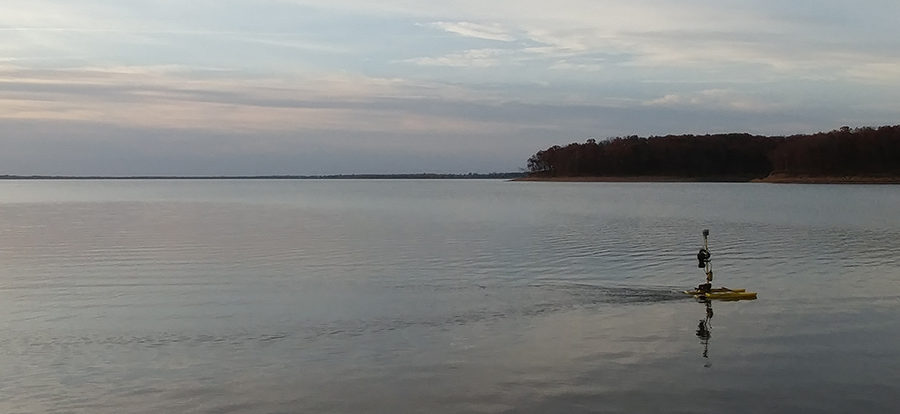Rathbun Lake
Rathbun Lake, Iowa, United States Army Corps of Engineers (USACE) – Kansas City District
Affinis is working with the United States Army Corps of Engineers (USACE) on ecosystem restoration at Rathbun Lake. The goals of this effort are to improve aquatic habitat through the targeted stabilization of shoreline erosion and placement of in-lake structures and reduce the out-migration of fish species, specifically walleye, through the lake outlet. During times of high water levels in Rathbun Lake, fish are being “sucked” out of the lake and delivered downstream into the less hospitable Chariton River. The barrier will help keep the fish away from the lake outlet.
To achieve this, our team began by completing a Preliminary Feasibility Assessment to address aquatic ecosystem restoration under Section 1135 of the Water Resources Development Act. This assessment evaluated the cost and benefits associated with both the shoreline stabilization and out-migration prevention measures. Based on the assessment performed, the installation of an electric fish barrier at the lake outlet and stabilization of key shoreline areas were recommended.
Building off the preliminary assessment for Rathbun Lake, we are completing conceptual engineering and a preliminary feasibility level design of alternative measures and plans to restore aquatic habitat and decrease fish out-migration downstream into the Chariton River. We completed a site evaluation and shoreline survey, including the use of a remote-controlled boat with on-board GPS equipment to conduct a bathometric survey. Using this technology, we were able to take measurements from below the water surface more quickly. The collected data is used to scale and design the habitat restoration measures, generate material quantities, and estimate project costs for potential improvements. In addition, various fish barrier methods are being evaluated.
Learn more about our ecosystem restoration work with USACE.
Sustainability
- Stabilizing shoreline areas impacted by erosion.
- Making the lake more sustainable long-term.
